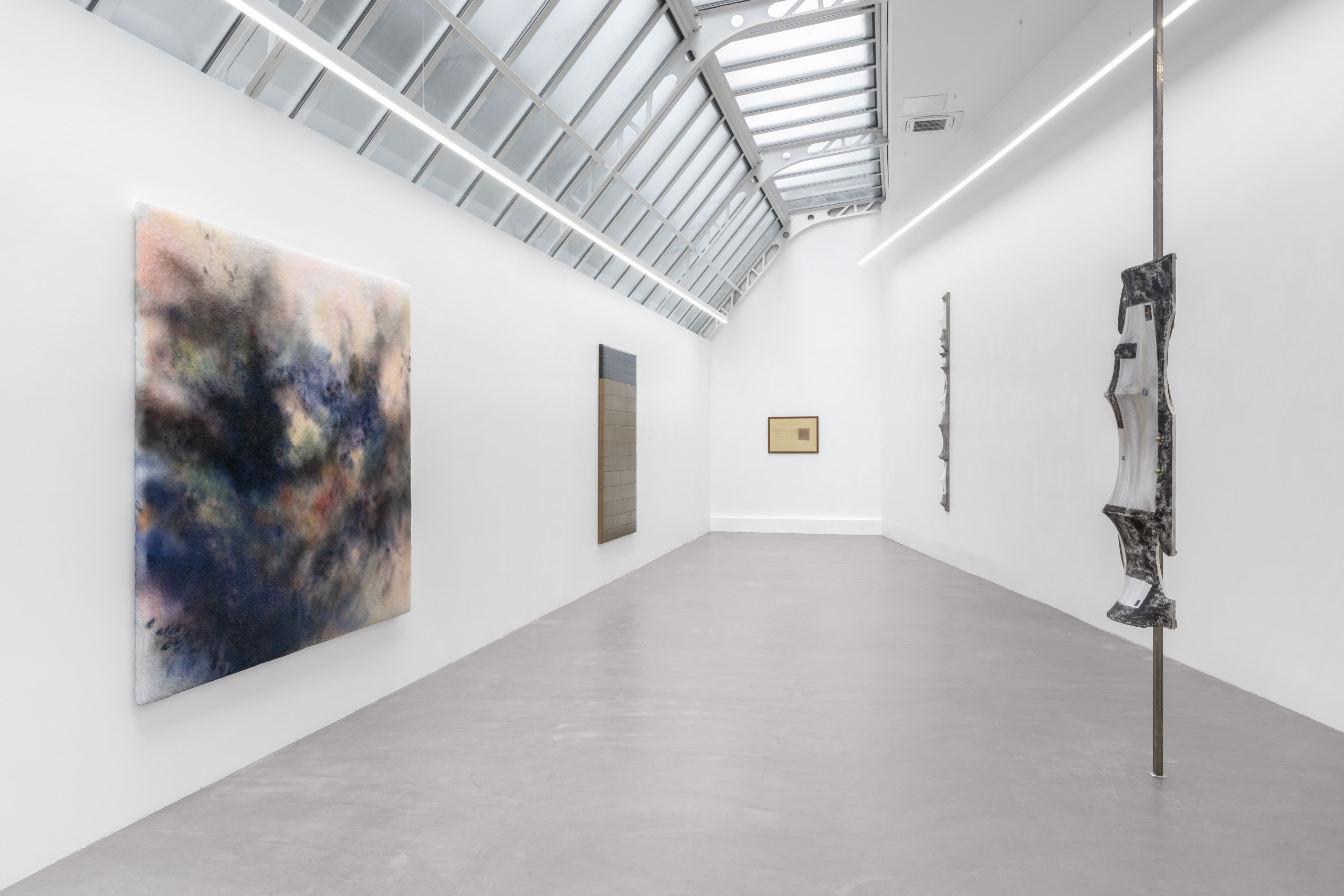
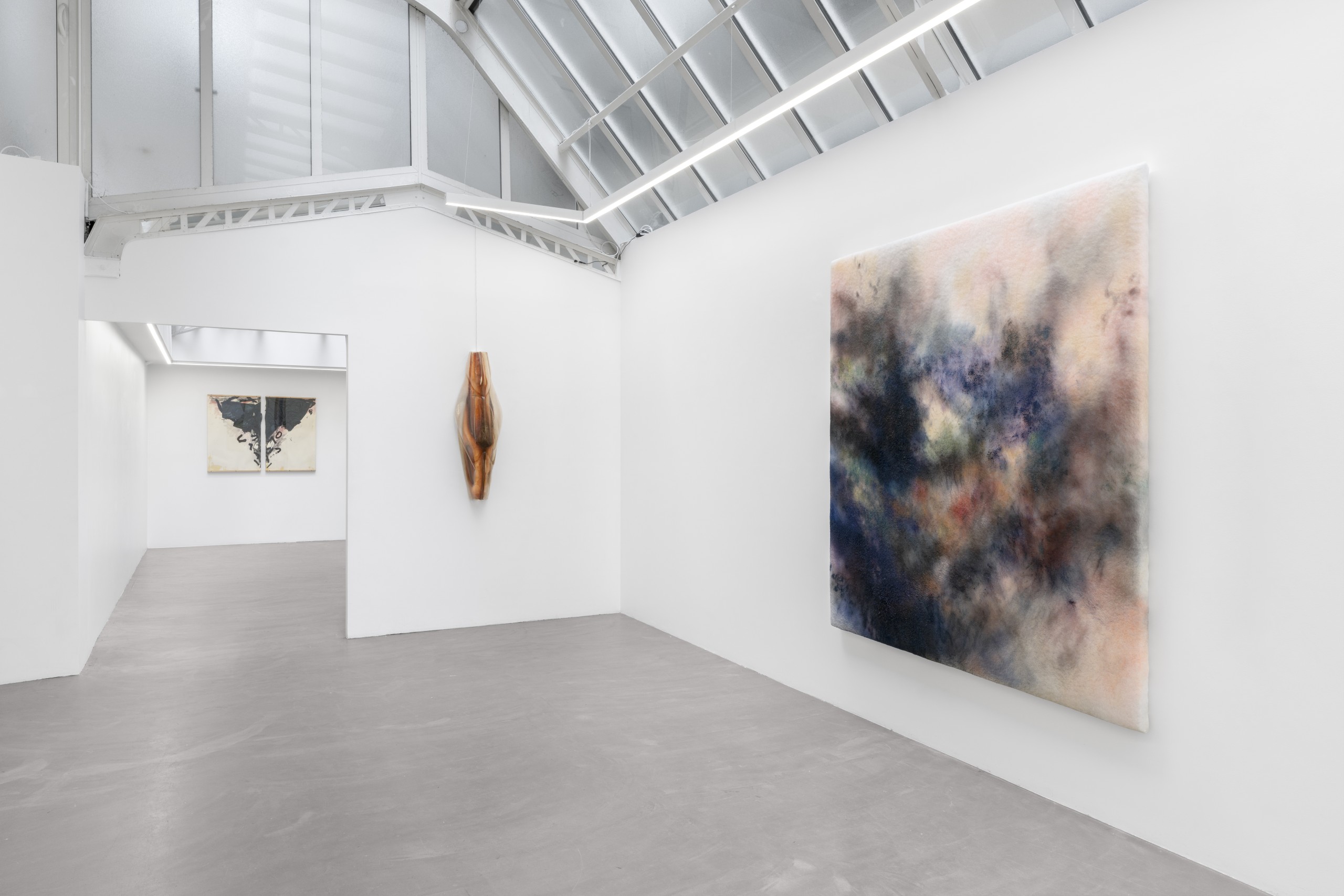
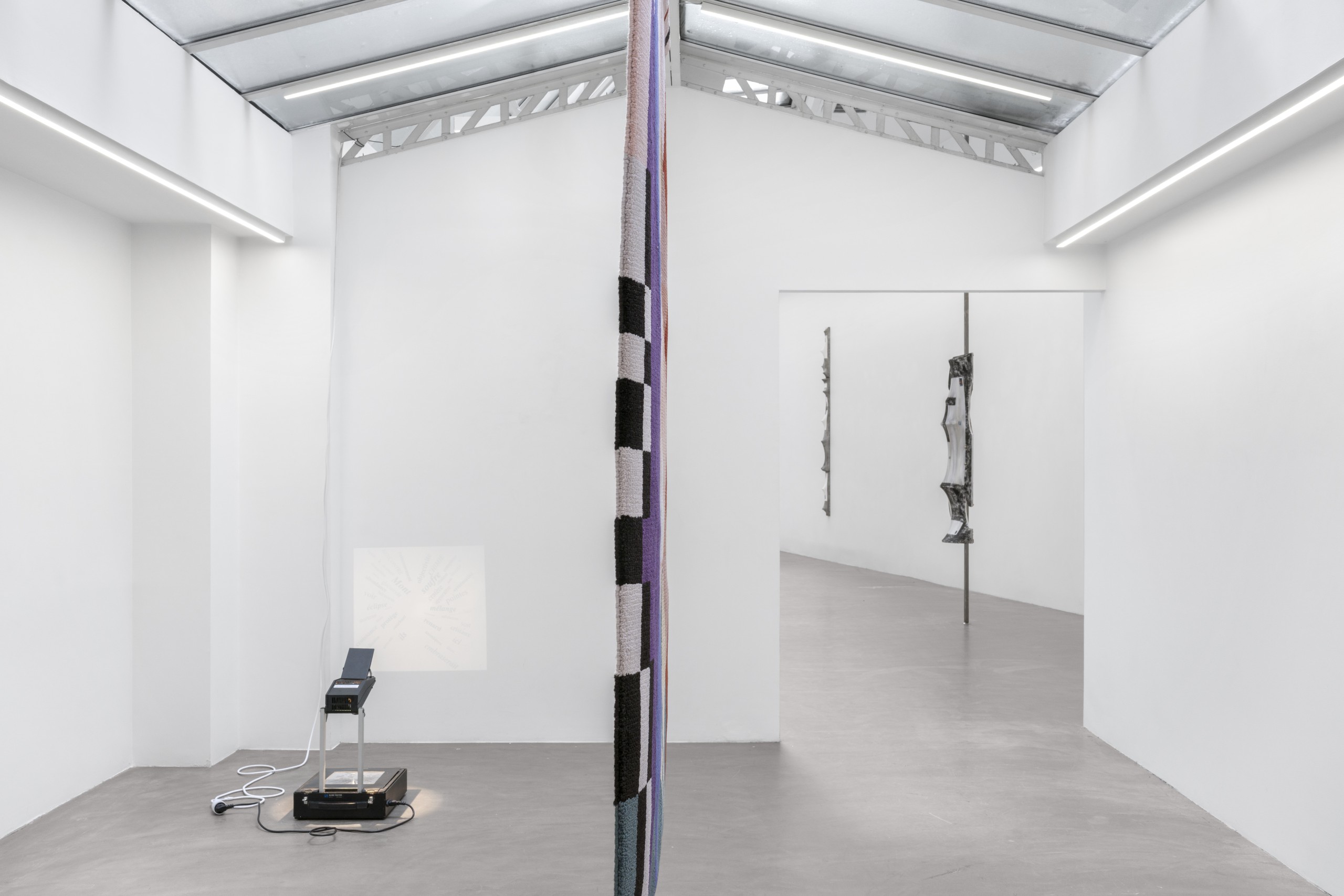
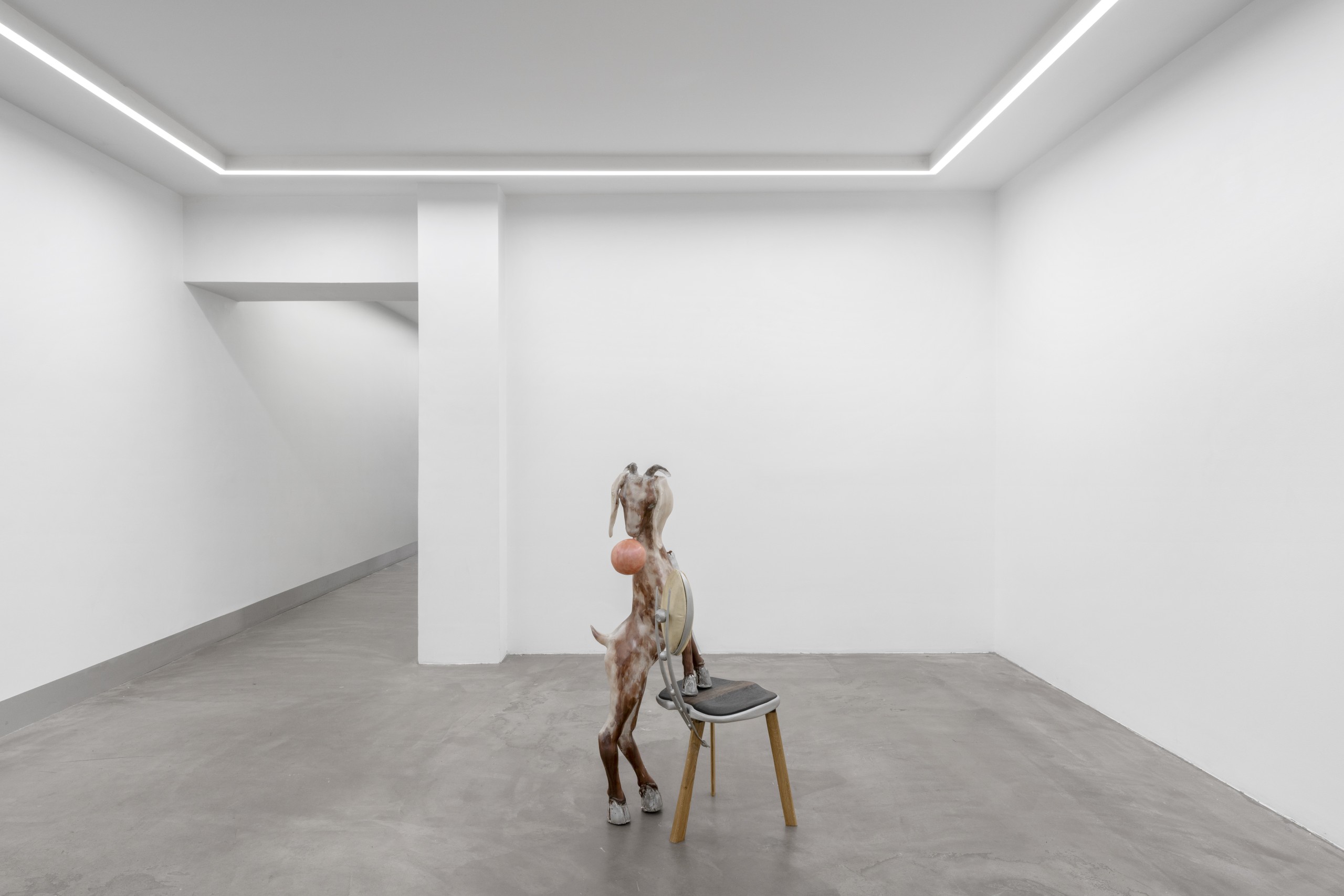
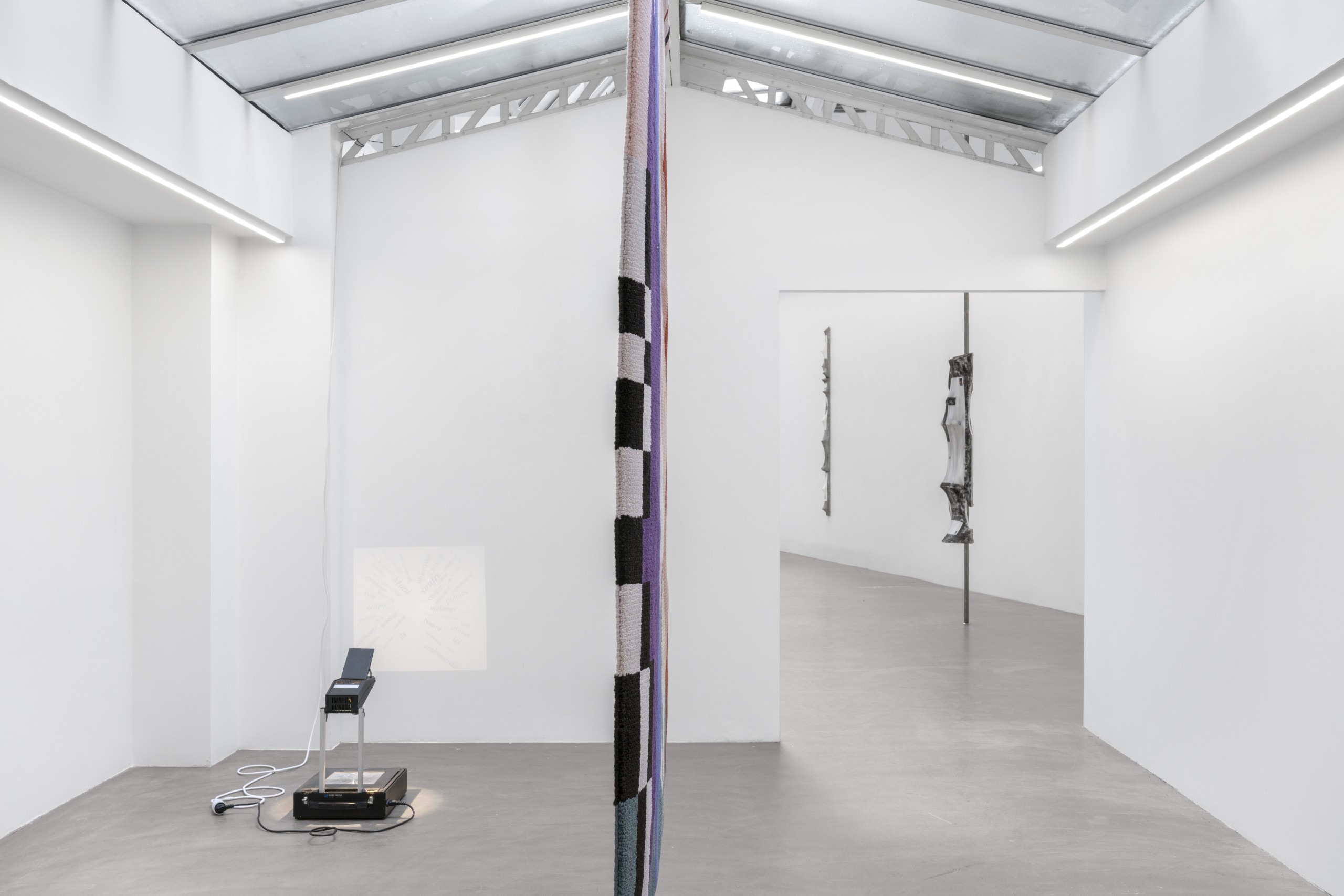
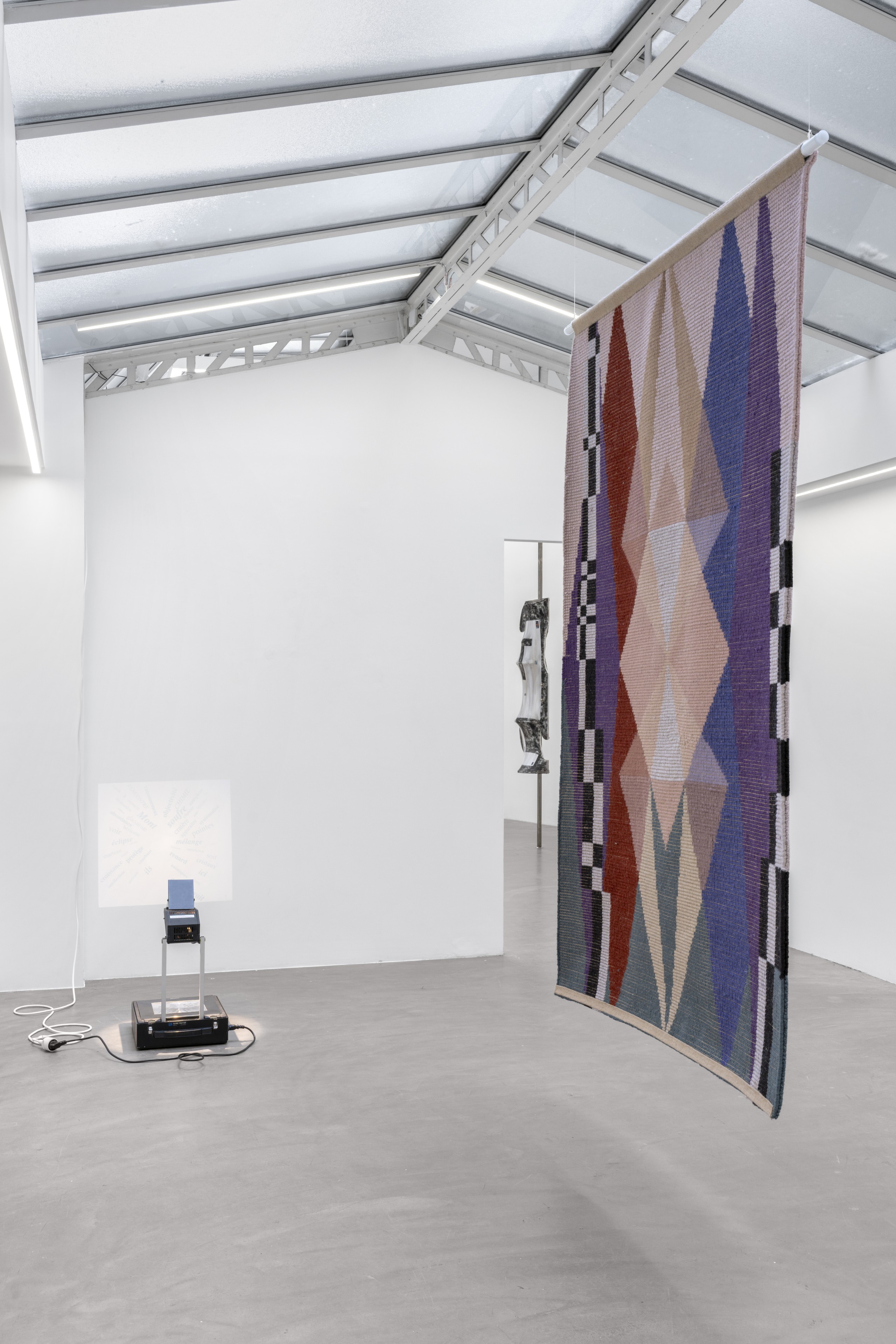
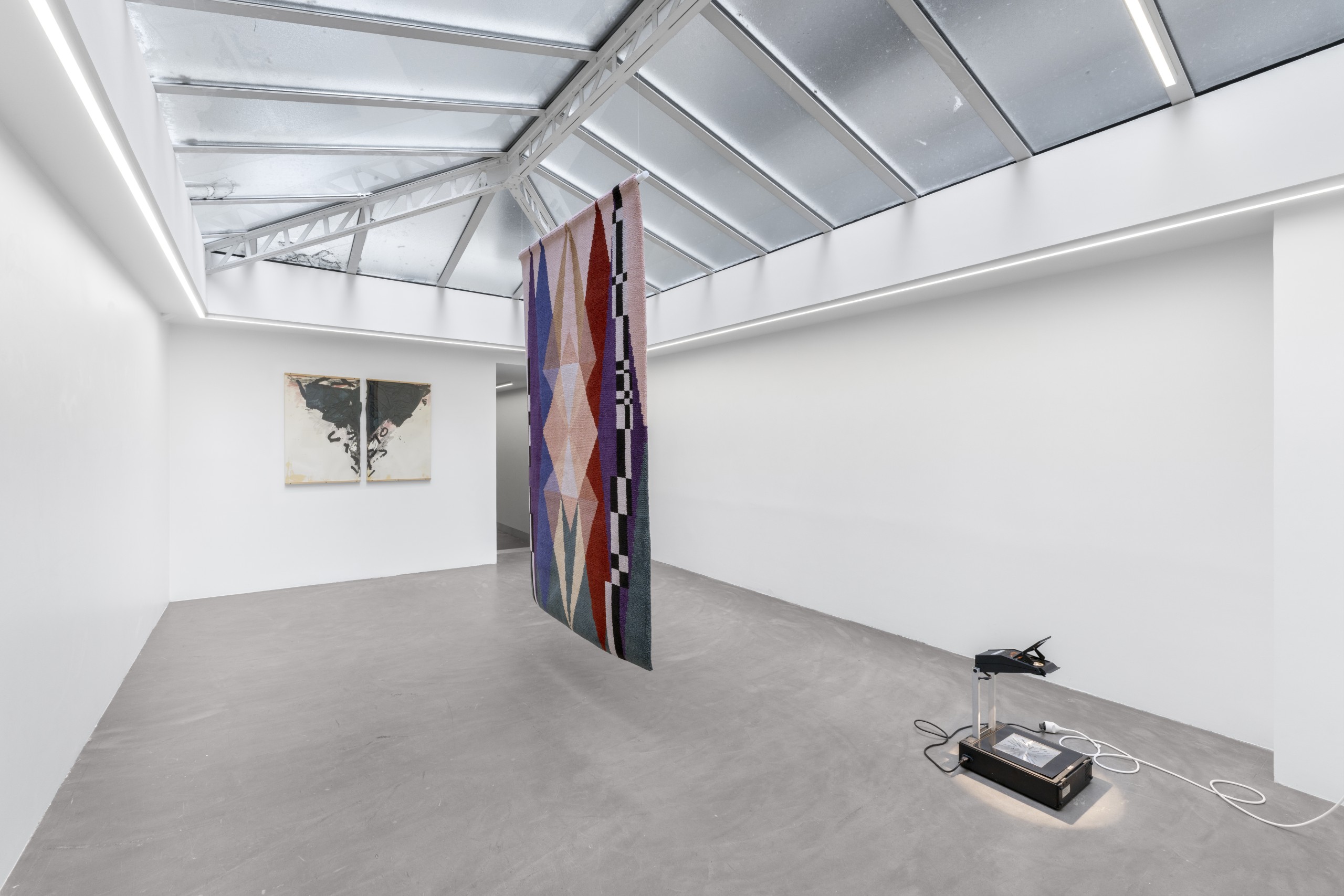
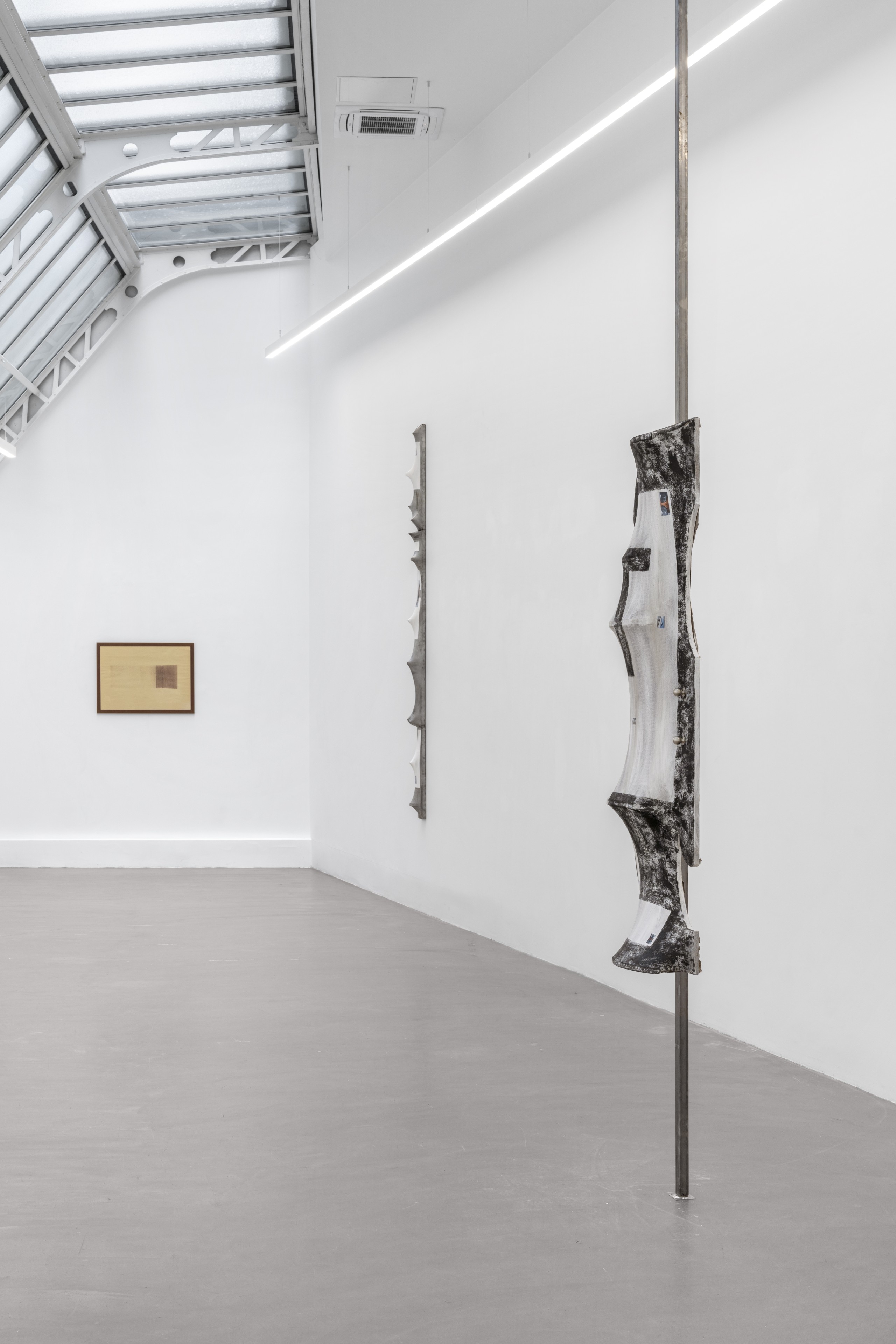
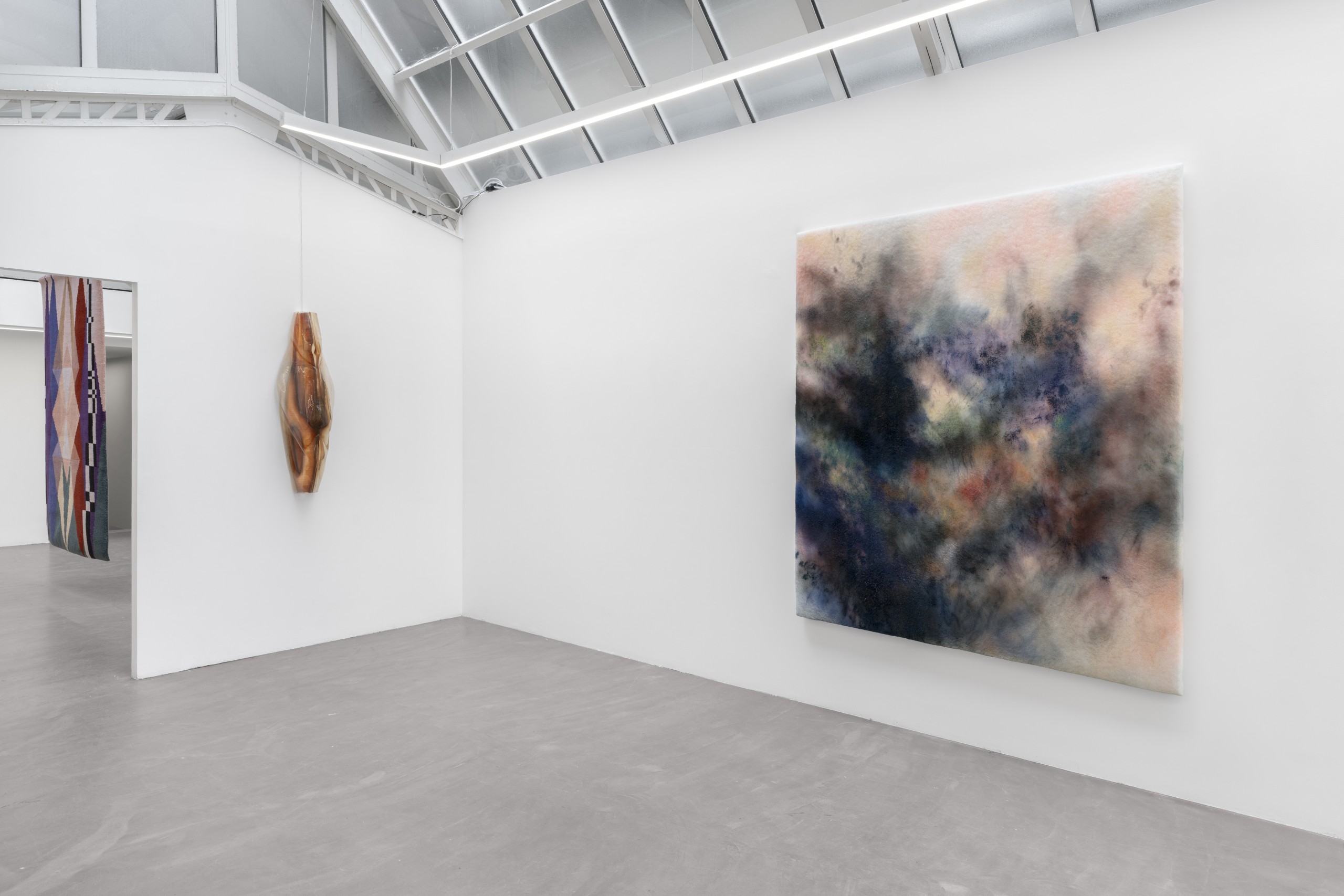
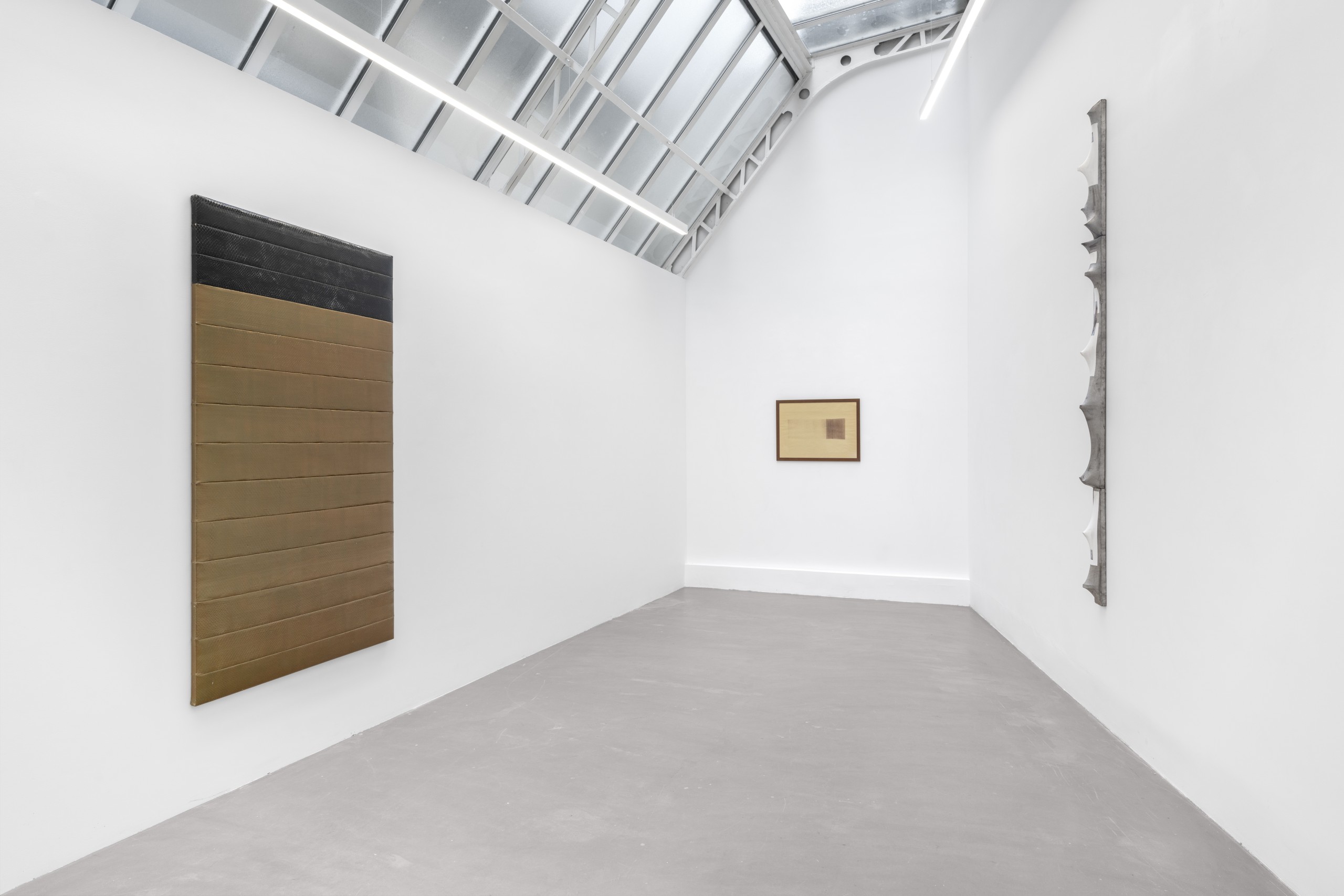
© Credits photo : Nicolas Brasseur










Meris Angioletti, Kim Farkas, Corinna Gosmaro, Francesco Lo Savio, Isaac Lythgoe, Nene Martelli, Daniele Milvio, Winnie Mo Rielly
Curated by Corinna Gosmaro
June 5 — July 26, 2025
13 rue Béranger, 75003 Paris
There’s something quite astonishing about our ability to recognize people from behind—especially from afar, and particularly when it comes to people we don’t know well. We don’t have a detailed sense of their bodies; we usually can’t distinguish their clothing, and we certainly can’t smell or touch them. Yet somehow, something in us is able to grasp their identity.
It has to do with the way they stand, the way they carry their bodies. Is it all about their style? If so, then it’s the kind of style Merleau-Ponty describes as a “modality of being in the world” (modalité d’être au monde). It refers to the corporeal-expressive schema that not only structures but articulates our relationship with the world.
This is about our posture, in the broadest and most existential sense.
Articulations are quite literally what make posture possible—and beyond the wordplay, they allow the body to articulate its posture in response to the world: objects, others, space, and emotional states.
Posture, then, is an expressive configuration enabled by articulations that are both physiological and existential—sustaining continuity in a body that is at once world-facing and world-constituted: entangled with the world, formed by it, and expressive within it.
This entanglement—between body, perception, and world—is not fixed but constantly reconfigured through interaction.
The body is not a sealed entity, but a porous threshold that finds its unity in its continuous exposure to the world. It is open field of relations, always in the making.
A fragmented and disunified body, never fully present to itself until it is unified with everything it is not in the very act of perceiving. Perception is not oscillation—it is action, participation, and articulation.
It is not by chance that Art and Articulation share the same Indo-European root ar, meaning to join, fit together, or connect. This connection—just like those within our own bodies—can be fixed, semi-fixed, mobile, or even in motion: the ongoing process of articulating.
The expression of an idea or a feeling contracts, contorts, and expands the body—emitting through sound, releasing as emotion. We articulate through action, sometimes by creating uncanny objects—artworks or what American philosopher Alva Noë calls “strange tools”—that help the body reveal its own organization and continuously reorganize in the process.
Art, in all its forms, articulates. Articulations are sites of potential: they allow for both movement and stabilization, both connection and differentiation. Thus, they serve as an ideal metaphor for understanding how posture emerges as a dynamic, expressive structure—both physical and symbolic.
Artworks are articulations—actual joints—between the sense of reality and the sense of possibility. They are encapsulations of this entanglement, constantly varying as they loop back to the viewer. The artist can choose whether or not to answer the call to creative responsibility that Robert Musil already expressed in the early twentieth century in The Man Without Qualities: to relate to reality what does not yet exist but could.
Even in times of crisis, there remains the possibility to build through an open and ironic form of thought— reconfiguring our lives as if each day held the potential to be recomposed and reorganized in new ways.
In 1962, American writer James Baldwin wrote: “The artist cannot and must not take anything for granted, but must drive to the heart of every answer and expose the question the answer hides.”
Artists articulate through the process of making, but for it to be fully effective, it must be a total articulation.
TOTAL ARTICULATION is a group exhibition in which the practices of the invited artists resonate through a shared attitude of simultaneously expanding and contracting their work. Here, the artwork refuses to remain merely an object to be viewed; instead, it becomes an element that seeks to alter and articulate both space and the viewer’s experience—capable of liberating itself from the artist’s original sentimental or biographical impulse.
These works, in their variety, enact different kinds of articulation: some precise, others porous; some fixed, others open to drift. Together, they form a system in motion—an exhibition that functions as a body of joints.
— Corinna Gosmaro